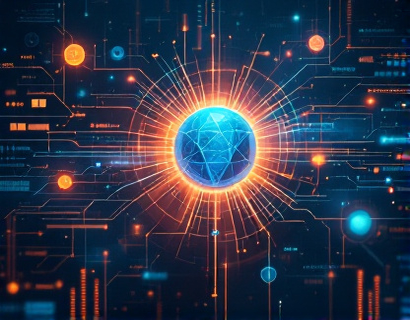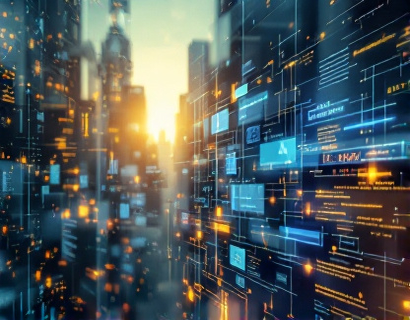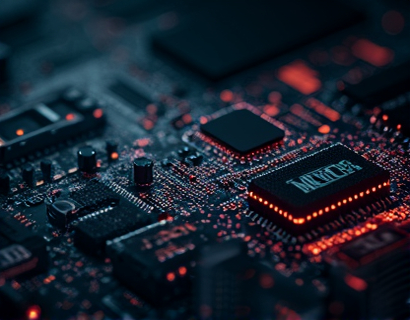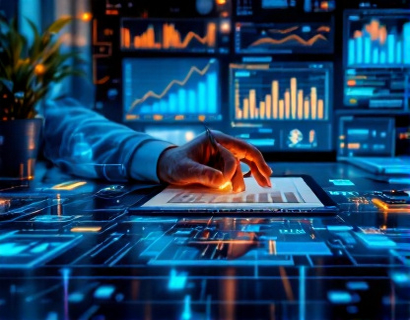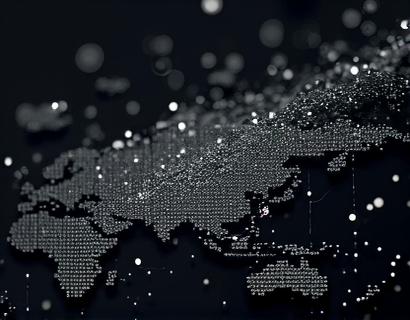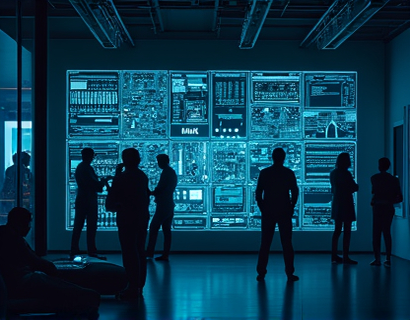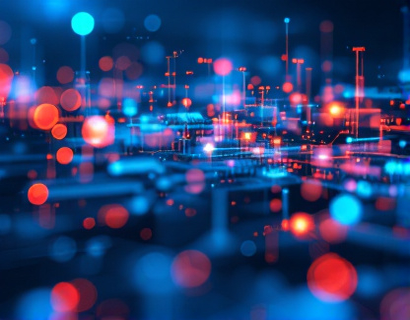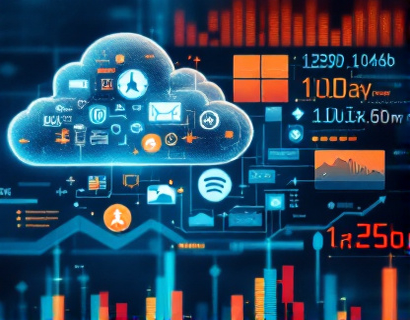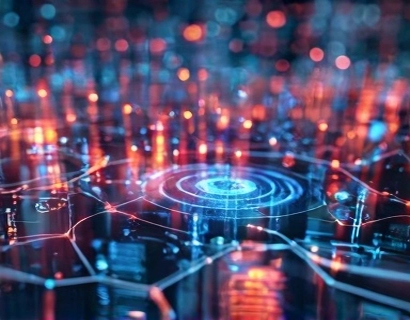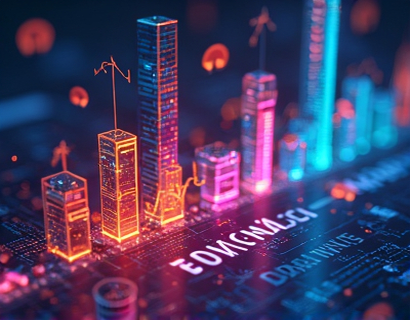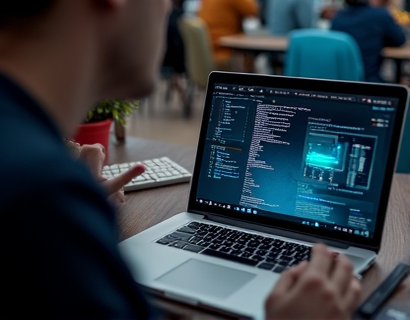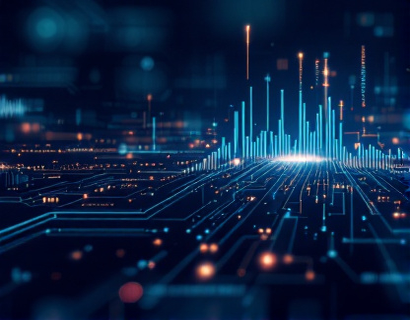Decentralized Productivity Transformed: Harnessing AI and Crypto for Next-Gen App Ecosystems
The integration of artificial intelligence (AI) and cryptocurrency is ushering in a new era of decentralized productivity tools and app ecosystems. This transformation is not just about enhancing existing workflows but redefining the very foundation of how we interact with technology. For tech-savvy individuals, AI enthusiasts, and early adopters of digital solutions, understanding this shift is crucial. This article delves into the synergy between AI and cryptocurrency, exploring how these technologies are converging to create more efficient, secure, and user-centric applications. We will examine the potential of decentralized app ecosystems and their capacity to revolutionize modern workflows, offering insights that are particularly relevant to productivity-focused professionals and users seeking innovative decentralized applications.
The concept of decentralized applications, or dApps, has been gaining traction since the advent of blockchain technology. Unlike traditional applications that rely on centralized servers, dApps operate on a distributed network, ensuring greater transparency, security, and resilience. The introduction of AI into this framework amplifies these benefits, enabling dApps to not only function more efficiently but also to adapt and learn from user interactions. This fusion of AI and decentralization is paving the way for a new generation of productivity tools that are smarter, more responsive, and inherently secure.
Enhanced Security Through Decentralization
One of the most significant advantages of decentralized app ecosystems is enhanced security. Traditional centralized systems are vulnerable to single points of failure and cyber attacks, as all data and processing occur on a central server. In contrast, decentralized systems distribute data and processing across a network of nodes, making it extremely difficult for malicious actors to compromise the entire system. This distributed nature ensures that even if one node is compromised, the rest of the network remains intact and functional.
Cryptocurrency plays a pivotal role in this security enhancement. Blockchain technology, the backbone of cryptocurrencies, provides a tamper-proof ledger for transactions and data storage. Smart contracts, self-executing contracts with the terms directly written into code, further automate and secure interactions within the ecosystem. These contracts eliminate the need for intermediaries, reducing the risk of fraud and ensuring that all transactions are transparent and verifiable.
AI-Driven Efficiency and Personalization
AI brings a new level of efficiency and personalization to decentralized app ecosystems. Machine learning algorithms can analyze vast amounts of data to identify patterns, predict user needs, and optimize workflows. For instance, AI can automate routine tasks, freeing up users to focus on more complex and creative aspects of their work. In a decentralized context, these AI-driven tools can operate independently across the network, ensuring that each user experiences a tailored and seamless interaction.
Personalization is another area where AI shines. By learning from user behavior and preferences, AI can customize the user interface, suggest relevant tools, and even anticipate user actions. This level of personalization not only enhances user experience but also increases productivity by reducing the time spent on navigating through menus or searching for tools. In a decentralized ecosystem, this personalization can be extended to multiple devices and platforms, providing a consistent and optimized experience across the board.
Interoperability and Integration
The true power of decentralized app ecosystems lies in their interoperability and integration capabilities. Unlike siloed systems, dApps can communicate and share data seamlessly across different platforms and networks. This interoperability is crucial for creating a cohesive and comprehensive productivity environment. Users can access a wide range of tools and services without the hassle of switching between different applications or dealing with compatibility issues.
Cryptocurrency facilitates this interoperability by serving as a universal medium of exchange. Smart contracts can automate payments and data sharing between different dApps, ensuring smooth and secure transactions. This eliminates the need for manual intervention and reduces the risk of errors or delays. The use of blockchain-based identity verification further streamlines the process, allowing users to authenticate and authorize access without compromising privacy.
Incentivization and Community Engagement
Decentralized app ecosystems often incorporate token-based incentivization mechanisms to foster community engagement and participation. Tokens can be used to reward users for contributing value to the network, such as providing computational power, verifying transactions, or creating and maintaining dApps. This token economy aligns the interests of users and developers, encouraging a collaborative and vibrant community.
AI can enhance this incentivization by dynamically adjusting rewards based on user contributions and network needs. For example, AI can analyze the current demand for certain tasks and allocate tokens accordingly, ensuring that the most valuable contributions are properly recognized. This adaptive approach not only motivates users but also optimizes the overall efficiency of the ecosystem.
Case Studies and Real-World Applications
Several projects are already demonstrating the potential of AI and cryptocurrency in decentralized app ecosystems. One notable example is Filecoin, a decentralized storage network that uses AI to optimize data storage and retrieval. By leveraging machine learning, Filecoin can predict storage demand and allocate resources efficiently, ensuring fast and reliable access to data. Users are rewarded with Filecoin tokens for providing storage capacity, creating a self-sustaining and community-driven network.
Another example is Compute Market, a decentralized computing platform that uses AI to match computational tasks with available processing power. The platform employs smart contracts to automate payments and ensure fair compensation for resource providers. This not only reduces costs for users but also democratizes access to powerful computing resources, enabling a wider range of applications and innovations.
Challenges and Future Prospects
Despite the numerous benefits, the integration of AI and cryptocurrency in decentralized app ecosystems is not without challenges. Scalability remains a significant issue, as blockchain networks can struggle to handle high volumes of transactions. However, ongoing developments in layer 2 solutions and sharding techniques are addressing these concerns, promising faster and more efficient networks.
Regulatory uncertainty is another factor to consider. As decentralized technologies grow in popularity, governments and regulatory bodies are beginning to take notice. While some regions are embracing these innovations, others are imposing restrictive measures. Staying informed and adaptable will be crucial for the long-term success of these ecosystems.
Looking ahead, the convergence of AI and cryptocurrency is poised to unlock even more possibilities. Advancements in quantum computing, for instance, could further enhance the capabilities of AI algorithms, leading to more sophisticated and efficient dApps. The integration of Internet of Things (IoT) devices with decentralized networks could also create smart environments that are both intelligent and secure.
In conclusion, the fusion of AI and cryptocurrency is transforming the landscape of productivity tools and app ecosystems. By leveraging the strengths of decentralization and machine learning, we are witnessing the emergence of more secure, efficient, and user-centric applications. As these technologies continue to evolve, the potential for innovation and disruption in various industries is immense. For those at the forefront of this digital revolution, the opportunities are vast and the future is bright.





